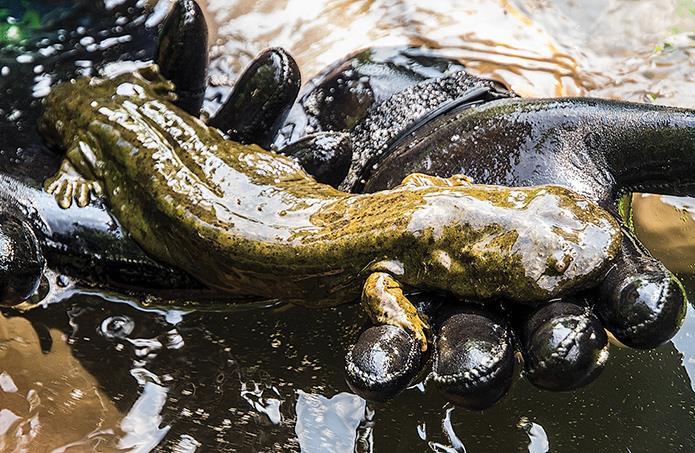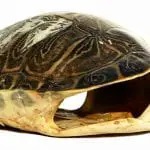Water is an essential element to reptiles and amphibians. It is not enough to just provide them with the available water around, but your main goal as a breeder is to ensure that the water is of high quality. There are different factors to consider in determining the right kind of water to give your reptiles and amphibians, such as the pH level and hardness of the water. There are different water sources that are why you need to have a particular approach on how to ensure the herp water quality.
What is the Acceptable Herp Water Quality
The water has hydrogen ions that are being measured by the pH meter on a scale of 0-14. pH level on the lower scale means that the water is acidic, and a pH level on the larger scale is alkaline; the pH level in the middle, which is at pH level 7, is neutral. Amphibians and reptiles thrive in herp water quality with a pH level between 6.5 to 7.
If the pH level is too high, you may add their water supply with sphagnum moss or peat and place it in a filter bag. If the pH level is too low, add the pH level by means of adding a pinch of baking soda (sodium bicarbonate) into the water supply. If you are to change the pH level, make sure to do it gradually, especially for the water that they use for soaking.
The hardness or the amount of dissolved minerals in the water is also measured, specifically the appearance of magnesium and calcium. Most amphibians are used to soft water, but in the wild, the water supply that they are exposed to is usually hard water. If the water supply is soft water, you may harden it by means of adding little amounts of magnesium and calcium salts. On the other hand, to lessen or to make the water soft, you may add distilled water in the water supply or pass it through reverse osmosis. Be reminded that changing the water hardness can also change the pH level.
Herp Water Quality from Different Water Sources

· Tap Water
Tap water is the common source of water for reptiles and amphibians, but it would depend on where you live. The pH level, as well as the hardness of the water, should be considered to ensure that it is acceptable and an appropriate water source. Tap water consists of dissolved salt and minerals; that is why its pH level and the hardness of the water are unpredictable, so testing kits is important.
· Well Water
Well water can only be used if it is tested. If you are living near the coastal area, there are high chances that the water that you will pump is seawater. Seawater is not good for reptiles and amphibians because drinking from it may cause dehydration. There are also well stations that are from limestone bedrock that is too acidic and too hard.
· Rainwater
Rainwater is always a good alternative water source, but if you are in a place that is quite polluted and has acidification problems, you may need to check the pH level of the water first. If you are going to use it with your pets, you need to make sure that the material that you are using is safe. Avoid using rainwater for your reptiles or amphibians if you are using the galvanized metal roof or if your roof has been treated chemically. Find other ways on how to collect rainwater without using materials that are made from a chemical-based material.
· Water from ponds, lakes, and streams
These are the natural water sources that your reptiles and amphibians need, but you also need to check where it came from. These bodies of water can be contaminated easily due to waste, toxic chemicals for pesticides and other agricultural mixes, and due to fecal waste from animals where bacteria can easily multiply. The bodies of water where you will get their water should be situated in a clean environment.
· Bottled Water
If you are not confident that your water supply at home is not safe for your reptiles or amphibians, you may need to use bottled water. Bottled waters pass through different kinds of purification stages to ensure that it is free from any contaminants that will not only harm the human body as well as your pets. There are different kinds and brands of bottled water, it might be quite pricey compared to other water sources that are free of charge, but you can be sure that it is well suited for different kinds of animals.
· Reverse Osmosis
This is a process of creating your own version of filtered water that makes use of a semipermeable membrane that has the ability to leave any dissolved minerals in the water behind. The goal of reverse osmosis is to give water quality product that is pure. If you use it with your reptiles and amphibians, you may need to do add beneficial trace elements so that the ions from your animals won’t be sucked up. Adding baking soda to it will stabilize the pH level and carbonate hardness.
· Water Filtration
This refers to the process of water purification wherein the water is filtered to remove any particles in the water such as chlorine, sediments, algae, and different kinds of bacteria. It makes use of three kinds of filtration, such as mechanical, biological, and chemical. Mechanical filtration is when there is an actual filter that is used to trap particulate matter. This type of filtration is not advisable for herp set-ups because for it to be effective, there should be a required water level, and since herp setups do not make use of much water, its use is just impractical.
The other kind of filtration is chemical filtration where it makes use of safe chemicals where the toxins can be magnified and be removed from the circulating water. It can remove chlorine, pesticides, odor, colors, and heavy metals that are present in the water. The last kind of filtration is biological filtration, where it makes use of helpful nitrifying bacteria and other organisms that break down different kinds of toxins. This process is called biofilters.
Final Thoughts
As part of taking good care of your amphibians or reptiles, it is important to always check the herp water quality because it may greatly affect their bodily process. The water quality is crucial, especially if your reptile or amphibian pet came directly from the wild, so you may need to invest in pH meters, water processors, and other tools to ensure that the kind of water is friendly to them.



